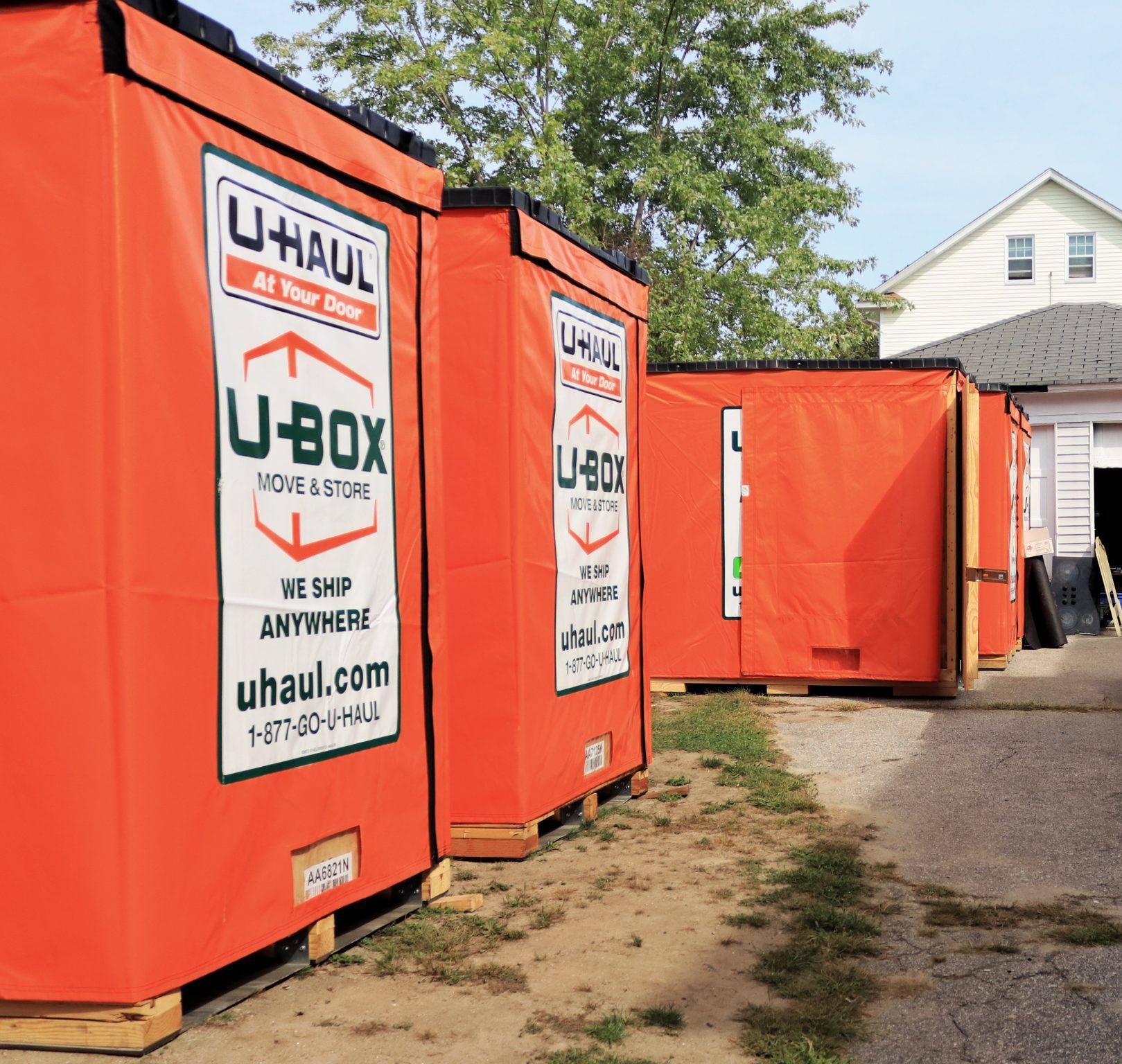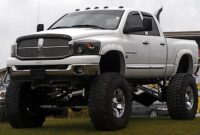U-Haul Trailer Dimensions: Your Comprehensive Guide to a Seamless Move cars.truckstrend.com
Moving can be one of life’s most challenging endeavors, often accompanied by a significant degree of stress and uncertainty. Among the myriad decisions you’ll face, choosing the right moving equipment is paramount. This is where understanding U-Haul Trailer Dimensions becomes not just helpful, but absolutely critical. U-Haul, a ubiquitous name in the DIY moving industry, offers a diverse fleet of trailers designed to cater to various moving needs, from hauling a few boxes to transporting a vehicle across states.
Knowing the precise dimensions of U-Haul trailers empowers you to select the perfect size, ensuring all your belongings fit safely and efficiently, preventing multiple trips, and ultimately saving you time, money, and hassle. It’s about more than just fitting your couch; it’s about optimizing your move for safety, efficiency, and peace of mind. This comprehensive guide will delve into the intricacies of U-Haul trailer dimensions, helping you navigate your next move with confidence.
U-Haul Trailer Dimensions: Your Comprehensive Guide to a Seamless Move
Understanding the U-Haul Trailer Fleet: Types and Their Purpose
U-Haul categorizes its trailers into distinct types, each serving a specific purpose. Understanding these categories is the first step in selecting the right equipment for your move.
1. Enclosed Cargo Trailers
These are the most common type for household moves, offering protection from weather and road debris. They are fully enclosed, resembling a small box on wheels, and are ideal for furniture, boxes, and other personal belongings.
2. Open Utility Trailers
Designed for larger, bulkier items that may not fit in an enclosed trailer or don’t require weather protection, such as lawnmowers, construction materials, or oddly shaped furniture. They typically feature a low deck and often come with a loading ramp.
3. Car Trailers (Auto Transport & Tow Dolly)

Specifically designed for vehicle transportation.
- Auto Transports: Full trailers that lift all four wheels of the vehicle off the ground.
- Tow Dollies: Two-wheel trailers that lift only the front (or rear, depending on drive type) wheels of a vehicle, allowing the other two to remain on the ground.
Detailed Breakdown of U-Haul Trailer Dimensions
Let’s dive into the specific dimensions of each popular U-Haul trailer model. It’s crucial to distinguish between inside dimensions (usable space) and door opening dimensions (critical for loading large items).
A. Enclosed Cargo Trailer Dimensions
These trailers are measured by their approximate exterior length and width, but the inside dimensions and door opening sizes are what truly matter for packing.
-
4′ x 8′ Cargo Trailer:
- Inside Dimensions (L x W x H): 7′ 11" x 3′ 11.5" x 4′ 7"
- Door Opening (W x H): 3′ 1" x 4′ 1"
- Max Load Weight: 1,600 lbs
- Cubic Feet: ~142 cu. ft.
- Ideal Use: Studio apartment, dorm room, small furniture, boxes, or as an overflow for larger moves.
-
5′ x 8′ Cargo Trailer:
- Inside Dimensions (L x W x H): 8′ 1" x 4′ 9" x 5′ 2"
- Door Opening (W x H): 3′ 9" x 4′ 5"
- Max Load Weight: 1,800 lbs
- Cubic Feet: ~196 cu. ft.
- Ideal Use: Studio to 1-bedroom apartment, larger furniture, appliances, perfect for a college student moving.
-
5′ x 10′ Cargo Trailer:
- Inside Dimensions (L x W x H): 9′ 11" x 4′ 9" x 5′ 4"
- Door Opening (W x H): 3′ 9" x 4′ 9"
- Max Load Weight: 1,800 lbs
- Cubic Feet: ~240 cu. ft.
- Ideal Use: 1-bedroom apartment or small 2-bedroom, more furniture, small appliances, and more boxes.
-
6′ x 12′ Cargo Trailer:
- Inside Dimensions (L x W x H): 12′ 1" x 5′ 8" x 5′ 5"
- Door Opening (W x H): 4′ 9" x 4′ 9"
- Max Load Weight: 2,500 lbs
- Cubic Feet: ~360 cu. ft.
- Ideal Use: 2-bedroom home or large 1-bedroom, significant furniture pieces, multiple appliances. This is often the largest enclosed trailer available for standard car towing.
B. Open Utility Trailer Dimensions
Utility trailers are measured by their deck length and width. They typically have an open top and low side rails.
-
4′ x 7′ Utility Trailer:
- Deck Dimensions (L x W): 7′ x 4′
- Max Load Weight: 1,700 lbs
- Features: Often has a low deck height and sometimes a small ramp.
- Ideal Use: Small equipment, ATVs, dirt bikes, landscaping materials, small pieces of furniture.
-
5′ x 8′ Utility Trailer:
- Deck Dimensions (L x W): 8′ x 5′
- Max Load Weight: 1,890 lbs
- Features: Often includes a loading ramp for easy access.
- Ideal Use: Larger equipment, riding lawnmowers, motorcycles, bulky furniture, construction debris.
-
6′ x 12′ Utility Trailer:
- Deck Dimensions (L x W): 12′ x 6′
- Max Load Weight: 2,670 lbs
- Features: Heavy-duty construction, typically with a full-width ramp.
- Ideal Use: Large equipment, multiple motorcycles, small vehicles, significant construction materials, very large furniture.
C. Car Trailer Dimensions
-
Auto Transport:
- Deck Dimensions (L x W): Varies slightly by model, but generally designed for most cars, trucks, and SUVs.
- Max Vehicle Weight: Up to 5,290 lbs.
- Ideal Use: Long-distance vehicle transport, ensuring no wear and tear on the towed vehicle. Requires a robust towing vehicle.
-
Tow Dolly:
- Max Vehicle Weight: Up to 3,900 lbs (front-wheel drive) or 3,400 lbs (rear-wheel drive when reversed).
- Ideal Use: Short to medium-distance vehicle transport where one axle can remain on the ground. More economical than an auto transport.
Choosing the Right U-Haul Trailer Size: Practical Advice
Selecting the correct trailer size is crucial for a smooth and safe move. Here’s how to approach it:
- Inventory and Measure Your Belongings: Before anything else, make a detailed list of everything you plan to move. Pay special attention to your largest and most awkwardly shaped items (sofas, mattresses, refrigerators, dressers). Measure their height, width, and depth. This will directly inform your trailer choice, especially the door opening dimensions of enclosed trailers.
- Estimate Total Volume: For enclosed trailers, consider the cubic feet needed. A good rule of thumb: a studio apartment often requires a 4×8 or 5×8, a 1-bedroom a 5×10, and a 2-bedroom a 6×12. For larger homes, a combination of trailers or a U-Haul moving truck might be more appropriate.
- Assess Total Weight: Don’t just think about volume; consider the weight. Heavy items like appliances, books, and tools can quickly add up. Ensure the trailer’s maximum load capacity is sufficient. Overloading is extremely dangerous and can lead to accidents or damage to the trailer and your towing vehicle.
- Know Your Towing Vehicle’s Capacity: This is perhaps the most critical safety consideration. Every vehicle has a Gross Vehicle Weight Rating (GVWR) and a maximum towing capacity (GCWR – Gross Combined Weight Rating). Consult your vehicle’s owner’s manual to determine how much weight it can safely tow. This includes the weight of the trailer itself plus its contents. Never exceed this limit.
- Consider the Move Distance and Terrain: For longer distances or hilly terrain, you’ll want to be even more conservative with your load and ensure your towing vehicle is more than capable.
- Account for "Just in Case": It’s almost always better to err on the side of slightly larger than too small. An empty space can be filled with blankets or secured, but an overloaded trailer or items left behind are significant problems.
Important Considerations & Safety Tips When Using U-Haul Trailers
Beyond dimensions, several factors contribute to a successful and safe trailer rental experience.
- Hitch and Wiring Requirements: U-Haul requires specific hitch ball sizes (usually 1 7/8" or 2") and a working light connection (typically a 4-flat or 7-way connector) on your towing vehicle. Ensure your vehicle is properly equipped before reserving.
- Loading Techniques: Proper weight distribution is vital. Load about 60% of the weight in the front half of the trailer (closer to the hitch) and 40% in the rear. Secure all items to prevent shifting during transit using tie-downs, ropes, and moving blankets.
- Driving with a Trailer:
- Speed: Drive slower than usual, especially on curves and during adverse weather. U-Haul recommends a maximum speed of 55 MPH with their trailers.
- Braking: Allow extra stopping distance, as the added weight significantly increases your braking time.
- Turns: Make wider turns to account for the trailer’s length.
- Backing Up: This requires practice and patience. Small steering adjustments have a magnified effect.
- Insurance: U-Haul offers various coverage options (Safemove, Safetow). Consider these for peace of mind, as your personal auto insurance may not cover damage to a rental trailer or its contents.
- Reservations: Trailer availability can fluctuate, especially during peak moving seasons (end of month, summer). Reserve your desired trailer dimensions well in advance.
Benefits of Precisely Knowing U-Haul Trailer Dimensions
Understanding these dimensions isn’t just a technicality; it brings tangible benefits:
- Cost-Effectiveness: Avoids the need for multiple trips, saving on fuel, time, and potentially additional rental days.
- Time-Saving: A well-planned load means less time packing, less time on the road, and less time unloading.
- Reduced Stress: Eliminates the anxiety of whether everything will fit or if you’ll have to leave items behind.
- Enhanced Safety: A properly sized and loaded trailer is a safe trailer, reducing the risk of accidents due to overloading or instability.
- Optimal Organization: Knowing your space allows for better packing strategies and ensures fragile items are properly cushioned and secured.
U-Haul Trailer Dimensions & Estimated Daily Rates
Please note: Prices are estimates only and can vary significantly based on location, availability, demand, rental duration (daily vs. weekly), and whether it’s a one-way or in-town rental. Always check current pricing directly with U-Haul for your specific needs.
| Trailer Type | Model | Inside Length (ft-in) | Inside Width (ft-in) | Inside Height (ft-in) | Door Opening (W x H) | Max Load Weight (lbs) | Approx. Cubic Feet | Estimated Daily Rate (Local) |
|---|---|---|---|---|---|---|---|---|
| Enclosed Cargo | 4′ x 8′ | 7′-11" | 3′-11.5" | 4′-7" | 3′-1" x 4′-1" | 1,600 | 142 | $19.95 – $29.95 |
| 5′ x 8′ | 8′-1" | 4′-9" | 5′-2" | 3′-9" x 4′-5" | 1,800 | 196 | $24.95 – $34.95 | |
| 5′ x 10′ | 9′-11" | 4′-9" | 5′-4" | 3′-9" x 4′-9" | 1,800 | 240 | $29.95 – $39.95 | |
| 6′ x 12′ | 12′-1" | 5′-8" | 5′-5" | 4′-9" x 4′-9" | 2,500 | 360 | $34.95 – $49.95 | |
| Open Utility | 4′ x 7′ | 7′-0" (Deck) | 4′-0" (Deck) | N/A | N/A | 1,700 | N/A | $14.95 – $24.95 |
| 5′ x 8′ | 8′-0" (Deck) | 5′-0" (Deck) | N/A | N/A | 1,890 | N/A | $19.95 – $29.95 | |
| 6′ x 12′ | 12′-0" (Deck) | 6′-0" (Deck) | N/A | N/A | 2,670 | N/A | $24.95 – $39.95 | |
| Car Trailers | Tow Dolly | N/A | N/A | N/A | N/A | 3,900 (Vehicle Max) | N/A | $49.95 – $69.95 |
| Auto Transport | N/A | N/A | N/A | N/A | 5,290 (Vehicle Max) | N/A | $69.95 – $99.95 |
Frequently Asked Questions (FAQ) about U-Haul Trailer Dimensions
Q1: Can I tow a U-Haul trailer with any vehicle?
A1: No. Your vehicle must meet specific U-Haul requirements for towing capacity, hitch class, and lighting connections. Always check your vehicle’s owner’s manual for its maximum towing capacity and ensure it has the correct hitch ball and wiring.
Q2: Do U-Haul cargo trailers come with ramps?
A2: U-Haul enclosed cargo trailers typically do not have built-in ramps. You’ll need to lift items in or use your own ramp. Many U-Haul utility trailers (open-top) do come equipped with a loading ramp.
Q3: What’s the difference between "inside dimensions" and "door opening dimensions"?
A3: Inside dimensions refer to the total usable space within the trailer (length, width, and height). Door opening dimensions are the measurements of the trailer’s rear door, which are crucial for determining if large items (like refrigerators or sofas) can physically fit into the trailer.
Q4: How do I figure out my vehicle’s towing capacity?
A4: Your vehicle’s towing capacity is listed in its owner’s manual. It’s also often found on a sticker inside the driver’s side door jamb or online resources specific to your vehicle’s make, model, and year.
Q5: Do I need a special driver’s license to tow a U-Haul trailer?
A5: For non-commercial, personal use, a standard driver’s license is generally sufficient in the U.S. and Canada for towing U-Haul trailers. However, laws vary by state/province, so it’s always wise to check local regulations, especially if you plan to tow a very heavy load.
Q6: Are U-Haul enclosed trailers waterproof?
A6: U-Haul enclosed trailers are designed to be weather-resistant and protect your belongings from typical rain and road spray. While they are very good at keeping water out, they are not hermetically sealed and may not be 100% waterproof in extreme conditions or prolonged heavy downpours. It’s always wise to use furniture pads or plastic sheeting for added protection for sensitive items.
Conclusion
Navigating the world of U-Haul trailer dimensions might seem daunting at first, but with the detailed information provided in this guide, you are now well-equipped to make an informed decision. From the compact 4×8 enclosed cargo trailer perfect for a studio apartment to the robust 6×12 utility trailer for heavy equipment, U-Haul offers a solution for nearly every moving scenario.
The key to a successful, stress-free move lies in meticulous planning and a thorough understanding of your needs versus the capabilities of the equipment. By accurately measuring your belongings, knowing your towing vehicle’s limits, and selecting the U-Haul trailer with the precise dimensions for your items, you not only ensure the safety of your possessions but also embark on your journey with confidence. Remember, the right trailer size is not just about fitting everything in; it’s about making your move efficient, economical, and above all, safe. Happy moving!



